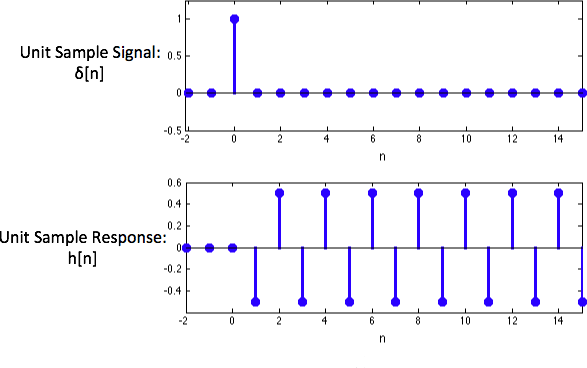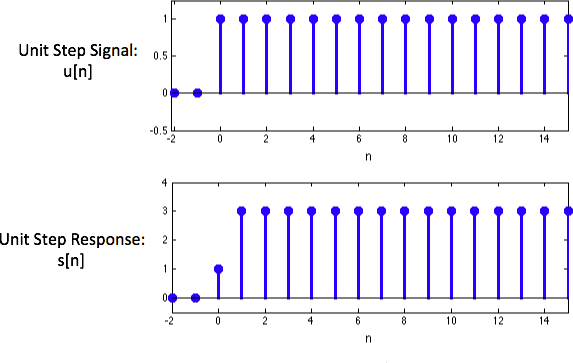Superposition
Recall that the unit sample signal \Delta is defined as:
and that the unit step signal U is defined as:
The unit sample response of a system is the output of that system when its input is the unit sample signal \Delta, and the unit step response of a system is the output of that system when its input is the unit step signal U
Relationship
Before moving on, note the following relationships:
Hint: what happens when you apply {\cal H} to both sides of the equations above? Can you arrange them to solve for one response in terms of the other?
Part 1
Consider a system with a unit _sample_ response $h[n]$:This response is depicted below:

Determine the first six values of this system's unit step response s[n] Enter a Python list of length 6 below, representing [s[0], s[1], s[2], s[3], s[4], s[5]].
Part 2
Consider a system with a unit _step_ response $s[n]$:This response is depicted below:

Determine the first six values of this system's unit sample response h[n]. Enter a Python list of length 6 below, representing [h[0], h[1], h[2], h[3], h[4], h[5]].